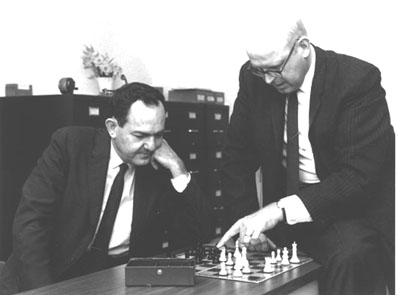

While working as consultants for the RAND Corporation, Simon and Newell discovered that because the early IBM digital computers used at RAND interpreted numbers as symbols, the computers could also recognize patterns. This told them that a computer, like the mind, could understand a symbol system - just as the mind understands what advantages a street, a bicycle, a highway, and a car symbolize when it solves the problem of getting from point A to point B.
The researchers then realized that a computer could solve problems as fast as a human can if it was programmed to use symbols in selective search patterns, known as heuristics. Humans use a heuristic every time they solve a problem using prior knowledge. If you know you can get from your town to a neighboring town by using a car, then you can also solve the problem of how to get to the next town beyond that. Without that heuristic, a human or a computer would have to try every possible means of traveling from town to town, and start from scratch every time the search for a solution failed.
Simon, Newell, and RAND computer scientist Cliff Shaw embarked on a joint Carnegie-RAND project to create a computer program that would understand the visual patterns of chess playing, and solve chess problems using the heuristics an average human player would.
Simon and Newell improved their chess machine's pattern recognition to produce the Logic Theorist, a program that could quickly prove propositional calculus theorems, which are represented in symbols instead of numbers. "Over Christmas", Simon announced to an astonished graduate class in January 1956, "Al Newell and I invented a thinking machine."





